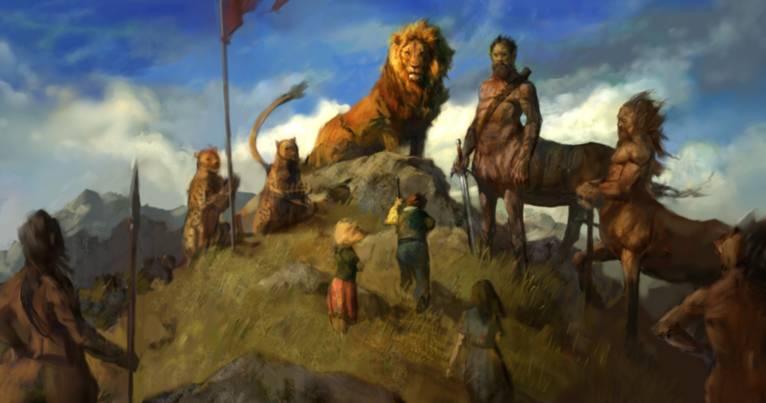"There's only one god ma'am, and I'm pretty sure he doesn't dress like that!"
- Captain America, The Avengers
As the campaign world that I and my friends have designed over the years has grown, so to have a number of other questions and issues of things that we originally left unanswered. However, the biggest one has to be the issue with the gods and their place in the world.
When I was younger and first started reading fantasy literature, I had some issues with the ideas of exploring other gods and deities of great power. To me, the concept was foreign and almost sacrilegious. I was raised Christian , and am heavily involved in the youth ministry within my own church. Having "other gods" didn't sit right. In my own games and imaginations, the gods are very rarely talked about. Nobody ever really plays religious characters. Instead of a Divine power source, my players typically go for Arcane or Martial (sorry Psionics). Perhaps they have some of the same issues as me.
It's well known that C.S Lewis and J.R.R. Tolkien were two devout Christians who who a lot of allegory and symbolism into their writings. Aslan the lion, from Lewis' works, is symbolic for Christ. Tolkien's representation of Christ in his own novels is more complex, with the Christ being Prophet, Priest and King distributed to Gandalf, Frodo and Aragorn respectively. As I grew older and began to read more Tolkien and learn about who the man was, I began to understand that the concepts of gods and other beings of power within my own fantasy worlds was all right. I was not forsaking Christ for a fake god, but rather creating something myself in representation. Tolkien has been a great source for guidance on this sort of matter. I looked at his own Middle-Earth creation story (also known as the Silmarillion), and (in my own personal opinion) we see a very similar nature of powerful beings set up, each with their own attributes and domains.
 |
| Elbereth, from Tolkien's Middle-Earth |
Up until this point, my campaign world was almost like Dark Sun, where no gods exist and nobody every really questions them. My group of Druids from the Lupine Wood were Jedi-like beings who looked for Nature to guide them and protect them. Elsewhere in the world, there was very little divine interaction.
When I started using D&D for my campaign world and started playing games, I simply went and used the default 4E pantheon, as that gave DM's and players a quick base to determine how they wanted to play the game. As time has gone on, I'm starting to see the pantheon slowly becoming tweaked. The Vellyn campaign will be tied to the War of Winter, Khala, the rise of the Raven Queen. Certain other deities will take their place in the world, slowly but surely, as I flesh them out and place them in their respective locations. I wouldn't be surprised if some fade away. There were 4E deities I didn't really ever use, and others I've used all the time (Bahamut comes to mind immediately). Fey-wise, Corellon, Sehanine, and Lolth have always felt more like extremely powerful Archfey than gods (simply because of how they are written). I've also become a fan of Grummsh and the legends surrounding him (from the History Check article about him and the Blood Of Grummsh adventure recently published in Dungeon). Both articles include some interesting options and takes on Grummsh and Corellon, ideas that can span an entire campaign.
In creating worlds, I think focusing on what kinds of aspects you want your deities to have. The D&D Next playtest packet does a great job of helping players establish how they want to create deities and gods for their own campaign by providing a list of ideas to build on, including The Lifegiver, The Lightbringer, The Protector, The Reaper, The Stormcaller, The Trickster, and The Warbringer. I think the flavor of the Cleric is spot on, and look forward to seeing other Divine classes.
 |
| Aslan |
Biblical events are also great ways to use them in campaign adventures. Indiana Jones and the Raiders of the Lost Ark is an extremely popular movie, based off many of the events of the Old Testament relating to the Ark of the Covenant. Some of the ideas in the movie are non-Biblically based, but the core is there. In the past, I wrote about a Garden of Eden adventure. I pitched the idea to WotC, but it didn't take, and I'm sure it will be something I can use in the future at a later date. Why are these ideas significant? Sometimes breaking down Biblical events allow us to understand them better. I lead a youth confirmation small group, and I'm constantly making references to movies and various pop culture things to tie the lessons together. I brought the Avengers in once to demonstrate an idea. The same can be done with D&D.
Playing D&D allows me to become a new sort of Tolkien or Lewis by using Biblical events to tell my own stories. As time has gone on, I've felt more comfortable expanding on the idea of gods in my own D&D games, and hopefully a player will decide to play a Divine character soon.
On another note, I've begun using Pinterest for inspiration. My boards can all be found here. Feel free to look and get some inspiration. Leave comments below, and follow me on Twitter @artificeralf
Comments
Post a Comment